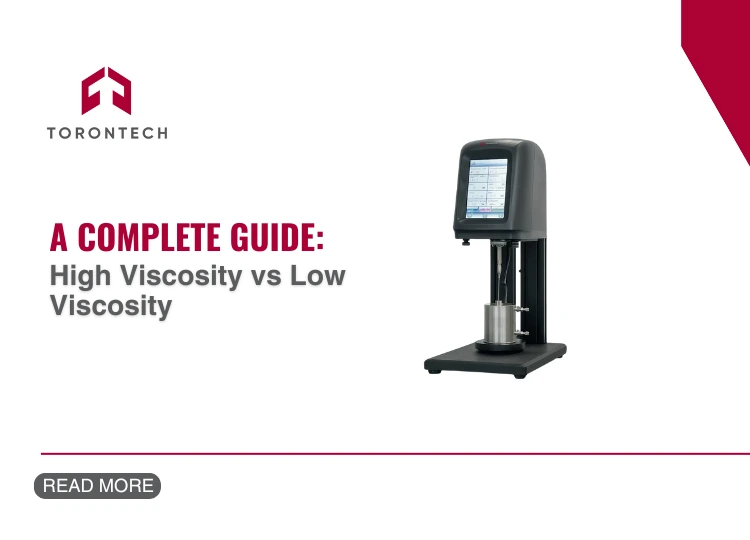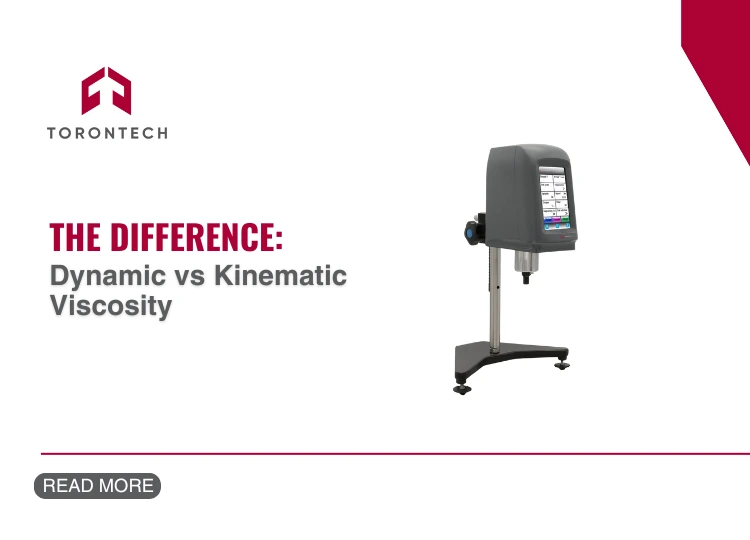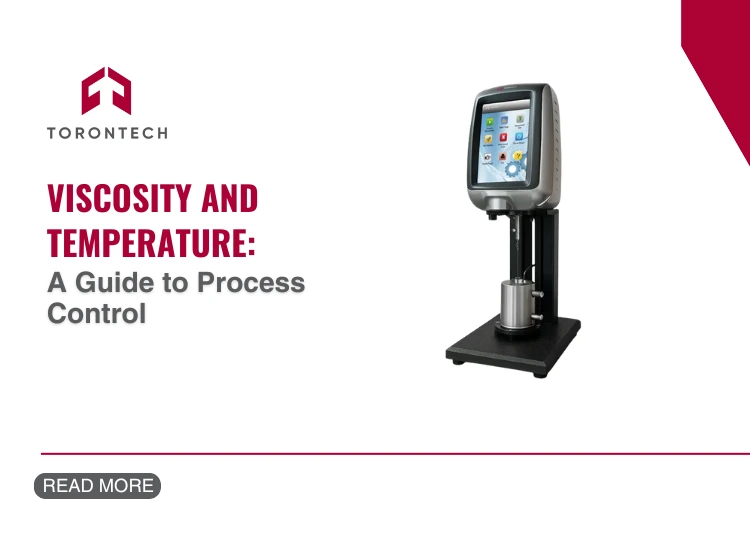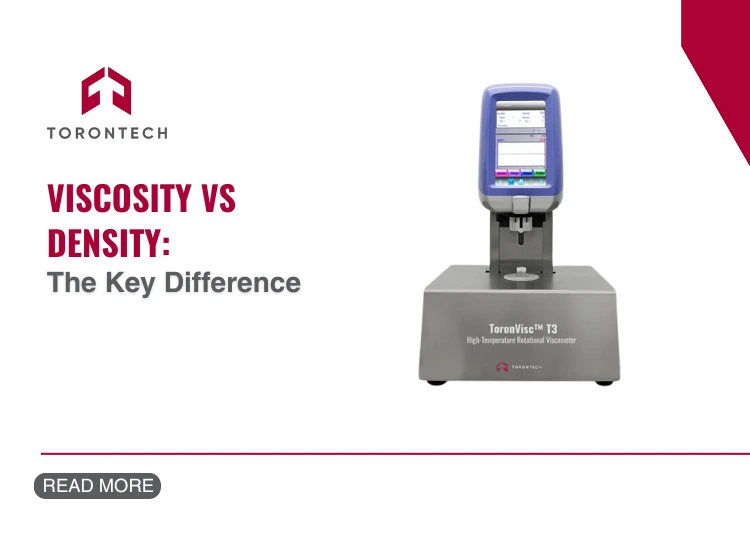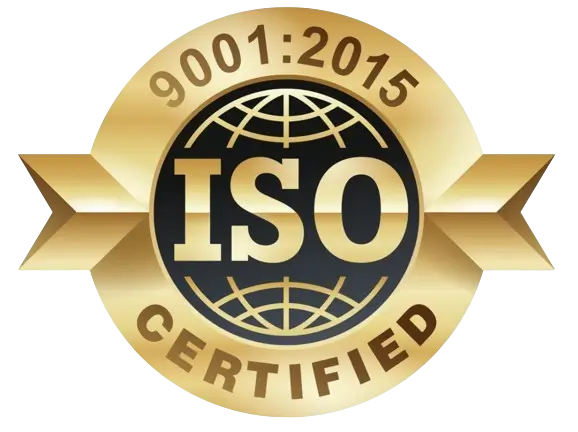Getting your fluid’s consistency right is a non-negotiable part of product quality. It’s a detail that quietly separates profitable production runs from costly, wasteful ones.
In the constant debate of high viscosity vs low viscosity, we’ve seen at Torontech that too many operations rely on guesswork. This guesswork isn’t just a technical oversight; it’s a significant business risk. To properly manage that risk in your viscosity testing, it starts with a practical look at the property itself.
A Practical Look at High vs. Low Viscosity
In essence, viscosity is a fluid’s resistance to motion. It’s the core property that settles the low viscosity vs high viscosity question for any application, determining how a substance will behave when it’s pumped, mixed, or applied.
A high viscosity means a fluid has strong bonds between its molecules, creating a substance that moves with deliberate slowness. This resistance to flow is often a critical performance characteristic—it’s a property we specialize in helping businesses control. When a product needs to hold its shape or provide a thick coating, high viscosity is what makes that possible.
On the other side, the low viscosity meaning applies to fluids that move with complete freedom. Their molecules slide past one another with very little friction. These are your solvents, inks, and light oils. They are the ideal choice for applications that depend on fast flow, but their free-flowing nature also makes them sensitive to small changes that can affect performance.
And the one factor we see overlooked most often is temperature. A fluid’s viscosity is rarely constant. As temperatures rise, most liquids become thinner. This dynamic is a key part of the high viscosity vs low viscosity discussion and why our ToronVisc series of viscometers often include precise temperature control—it removes a huge variable from the equation.
Related article: Viscosity and Temperature: A Guide to Process Control
High vs. Low Viscosity: Everyday Examples
Before we talk about industrial plants, let’s look at some simple, everyday high viscosity vs low viscosity examples that we all encounter. These real-world cases make the concept less abstract.
- High Viscosity: Think of honey, corn syrup, or molasses. When you try to pour them, they move slowly and create a thick, stable stream. The same principle applies to many condiments like ketchup and mustard, or household items like thick shampoo, dish soap, hair gel, and even toothpaste. They are all designed to be thick so they stay where you put them.
- Low Viscosity: Think of water, vinegar, or rubbing alcohol. They pour instantly, splash easily, and spread out thin in a fraction of a second. Other common examples include milk, juice, soda, tea, cooking oil, and window cleaner. These fluids are valued for their ability to flow quickly and effortlessly.
Understanding this basic difference is the first step in mastering the challenges of high viscosity vs low viscosity.
High vs. Low Viscosity: Applications in the Field
In an industrial environment, the same properties are engineered to achieve specific outcomes, making the choice between low viscosity vs high viscosity a critical business decision. The stakes are just much higher.
High Viscosity Applications (Where Control is Key)
- Adhesives and Sealants: Here, a high viscosity is essential. It gives the material the body it needs to fill a space without sagging.
- Food Production: The texture of products like yogurts is a huge part of the consumer experience. A higher viscosity often creates a texture consumers associate with quality, a parameter our clients in the food industry measure constantly.
- Pharmaceuticals and Personal Care: The consistency of a cream or ointment is vital for stability and for delivering a controlled application.
Low Viscosity Applications (Where Flow is Essential)
- Paints and Industrial Coatings: Achieving a smooth, uniform coat is entirely dependent on having a low viscosity. A viscometer is the only way to confirm that consistency before a costly batch is applied.
- Chemical Processing: Efficiency in chemical plants is often tied to how easily materials can be mixed. Low-viscosity fluids require less energy to pump and agitate.
- Automotive and Machinery Lubricants: Engine oil is a prime example of managed viscosity. It must be thin enough to circulate quickly during a cold start, yet retain enough body at high temperatures.
The Financial Impact of Poor Viscosity Control
Failing to properly manage your fluid’s consistency isn’t just a technical problem—it’s a direct drain on your company’s finances. The financial impact of getting the high viscosity vs low viscosity balance wrong can be substantial.
- Product Failure & Brand Damage: A product that doesn’t perform as expected leads to costly recalls and can erode the trust your customers have in your brand.
- Increased Material Waste: An out-of-specification batch often becomes scrap material. This is a direct loss of raw material costs, labor, and valuable production capacity.
- Premature Equipment Failure: Forcing a thick fluid through your system puts immense strain on pumps and mixers. Both paths lead to expensive repairs and unplanned downtime that we help companies design processes to prevent.
- Reduced Operational Efficiency: Incorrect viscosity is a drag on your entire process. It can slow down cycle times and increase energy consumption, eating away at your profit margins.
Gain Control of Your Fluids with Torontech
From our standpoint, it makes little business sense to invest heavily in materials and production, only to leave a critical property like viscosity to chance. We founded Torontech on the principle that precise, reliable quality control instruments should be accessible, not a financial burden. Our ToronVisc™ series of viscometers gives you the hard data needed to ensure consistency, batch after batch, without straining your capital equipment budget.
If you are ready to move from approximation to verification and protect your bottom line, we are here to assist. Contact us to find out how our cost-effective viscometers can be integrated into your quality assurance process.
We invite you to contact us to discuss your specific needs. Let’s identify the right ToronVisc™ model to ensure your product quality and protect your bottom line.
Need the Right Viscosity Measurement?
Explore cost-effective Torontech viscometers for precise, reliable results.
References
- Meffan, C., Menges, J., Mak, D., Dolamore, F., Fee, C., Nock, V., & Dobson, R. (2023). A versatile capillaric circuits microfluidic viscometer. Sensors and Actuators A: Physical. https://doi.org/10.1016/j.sna.2023.114497
- Singh, P., Sharma, A., Puchades, V., & Agarwal, P. (2022). A Comprehensive Review on MEMS-based Viscometers. Sensors and Actuators A: Physical. https://doi.org/10.1016/j.sna.2022.113456
- Esfahani, I., Ji, S., & Sun, H. (2023). A Drop-on-Micropillars (DOM)-Based Acoustic Wave Viscometer for High Viscosity Liquid Measurement. IEEE Sensors Journal, 23, 24224-24230. https://doi.org/10.1109/JSEN.2023.3309757
- Li, Y., Ward, K., & Burns, M. (2017). Viscosity Measurements Using Microfluidic Droplet Length.. Analytical chemistry, 89 7, 3996-4006. https://doi.org/10.1021/acs.analchem.6b04563
- Lenzen, P., Dingfelder, F., Müller, M., & Arosio, P. (2024). Portable Microfluidic Viscometer for Formulation Development and in Situ Quality Control of Protein and Antibody Solutions. Analytical Chemistry, 96, 13185 – 13190. https://doi.org/10.1021/acs.analchem.4c02099
- Bhattad, A. (2023). Review on viscosity measurement: devices, methods and models. Journal of Thermal Analysis and Calorimetry, 1-17. https://doi.org/10.1007/s10973-023-12214-0
- Wagh, M., B, P., Goel, S., & Sahoo, S. (2021). Development of Laser-Induced Graphene-Based Automated Electro Microfluidic Viscometer for Biochemical Sensing Applications. IEEE Transactions on Electron Devices, 68, 5184-5191. https://doi.org/10.1109/TED.2021.3107374
- Saasen, A., & Ytrehus, J. (2020). Viscosity Models for Drilling Fluids—Herschel-Bulkley Parameters and Their Use. Energies. https://doi.org/10.3390/en13205271
- Peretti, G., Bouscharain, N., Dörr, N., Ville, F., & Dwyer-Joyce, R. (2023). In-situ ultrasonic viscometry of lubricants under temperature and shear. Tribology International. https://doi.org/10.1016/j.triboint.2023.109210
Frequently Asked Questions (FAQ)
2. And what is the low viscosity meaning for my process?
The low viscosity meaning is that the fluid is thin and flows quickly with little effort. These are ideal for applications involving spraying, rapid dosing, or coating large surface areas.
3. Are all fluids measured the same way?
No, and this is a critical point. Simple fluids like water have a constant viscosity (Newtonian). But many industrial materials like paints, sauces, and gels are "non-Newtonian," meaning their viscosity changes when they are stirred, pumped, or spread. This is why a professional viscometer is so important—it can measure how a fluid will actually behave in your specific process.
4. What are some other high viscosity vs low viscosity examples?
Certainly. In construction, a high-viscosity concrete slurry is used for its strength, while a low-viscosity waterproofing spray is used for its ability to penetrate surfaces. In oil and gas, thick, high-viscosity drilling mud lubricates the drill bit, while low-viscosity crude oil is what's being extracted and pumped.
5. How do I choose the correct viscometer?
The right instrument depends on the nature of your fluid and your specific process needs. The most effective first step is to consult with an expert who can recommend a product that matches both your application and your budget. This is a big part of what we do at Torontech; we focus on finding the right fit, not just the most expensive one.

